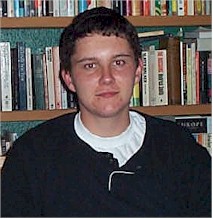Book Reviews by Sam Collins
 One of the common complaints about chess puzzle books is that the reader, knowing that there’s ‘something in the position’, only needs to look out for a queen sacrifice or something equally stunning in order to find the solution. Critics of these books remark that such a method is utterly at odds with how a player should approach a real chess position, in which the truth is rarely pure and never simple. One of the common complaints about chess puzzle books is that the reader, knowing that there’s ‘something in the position’, only needs to look out for a queen sacrifice or something equally stunning in order to find the solution. Critics of these books remark that such a method is utterly at odds with how a player should approach a real chess position, in which the truth is rarely pure and never simple.
Can you be a Positional Chess Genius? (Everyman Chess 2002, 144 pages, R.R.P. £14.99) by IM Angus Dunnington is a puzzle book in which the solutions consist not of stunning tactical variations, but rather of positional solutions. Through 150 test positions of varying difficulty, the author exposes the reader to a wide range of positional ideas. Each position is accompanied by a preliminary hint, which can be supplemented by consulting the ‘Ask a Grandmaster’ section (where a fictional GM lends a helping hand). The solutions are then given with explanatory notes and variations, and the reader rewarded with points depending on the number of ideas seen and hints consulted.
While such an approach goes a long way to avoiding the complaint outlined at the beginning of this review, some problems remain, the most obvious being that by jumping out of the frying pan we have landed in the fire. People reading tactical puzzle books don’t bother looking at positional solutions, thus it stands to reason that people reading this book won’t look for tactical remedies. Sacrifices aren’t a panacea for chess positions, but often they do work, and I would prefer an approach (such as that used in John Nunn’s Chess Puzzle Book) where the reader doesn’t know whether a tactical or positional variation represents best play. In fact, I think that a mere “White/Black to play” should represent all the guidance a player is given about a position; only then is a game-like situation simulated. My favourite approach to chess puzzles is that utilised by GM Danny King in How Good is Your Chess?, where the reader has to make every move for a particular colour in a given game, and is given a rating at the end.
I found Can you be a Positional Chess Genius? quite challenging, for the main reason that the reader is forced to consider one type of position and then instantly adjust his thinking to a completely different type of position, something which we rarely have to do in actual chess games, which tend to evolve along roughly predictable patterns with one or two sharp twists. I remember GM Yusupov quoting Russian general Alexander Suvorov (“The harder the training, the easier the battle”), and IM Dunnington should be applauded for writing a book where the reader is forced to quickly adapt to fresh situations.
The rating system used in this book is a little clumsy, however. First, it isn’t equated with chess ratings (the reader being told that his play was worth 8 points rather than representing a 2250 performance). Second, IM Dunnington often seems to reward seemingly arbitrary factors (5 points for noticing this pawn, 7 points for being scared of this) which are relevant in the game continuation but not necessarily vital to the position per se. Third, points are docked for consulting the ‘Ask a Grandmaster’ section, but the value of the hints presented there vary enormously, from vague musings like “Time to turn the positional table...” (what?) to hand-holding statements such as “Obviously White needs to insert f2-f3, so the decision revolves around where to put the knight. Keep your eyes peeled for spoiling tactics on the e-file” (thanks!). A combination of these factors, in my opinion, renders the rating system almost worthless, and the book is best enjoyed as a collection of puzzles with no self-assessment section.
Overall, however, I’m impressed with this book. It’s a different, more challenging kind of puzzle book than that traditionally encountered, and represents an effective method of explaining a very wide range of positional concepts to the reader.
MY ASSESSMENT: * * * *
Other reviews by Sam Collins
Review 1: Play the Open Games as Black, by John Emms
Review 2: The Human Comedy of Chess: A Grandmaster’s Chronicles by GM Hans Ree & Storming the Barricades by GM Larry Christiansen
Review 3: Open Ruy Lopez by Glenn Flear
Review 4: Main Line Caro-Kann by Neil McDonald
Review 5: Offbeat Spanish by Glenn Flear
Review 6: Excelling at Chess by Jacob Aagard
Review 7: Can You Be a Positional Chess Genius? by Angus Dunnington
Review 8: The Grunfeld Defence by Nigel Davies
Review 9: The Best of Chess Cafe
Review 10: How To Build Your Chess Opening Repertoire by Steve Giddins
Review 11: The …a6 Slav by Glenn Flear
Review 12: Starting Out: The Ruy Lopez by John Shaw
Review 13: Knockout Nimzo (video) by Tony Kosten
Review 14: My Great Predecessors by Gary Kasparov
|


